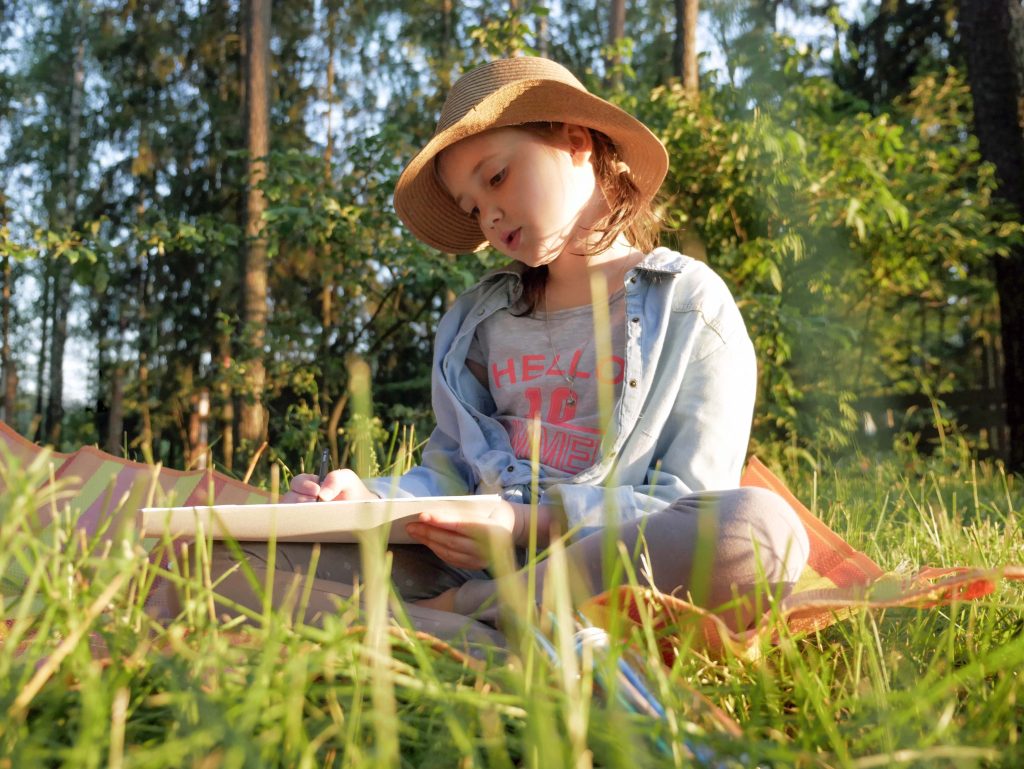The cool, crisp air. The sound of leaves crunching under your feet and finally, being able to go for a walk without oppressive heat and humidity. There’s nothing quite like fall in North Florida. Homeschoolers have the unique privilege of learning in nature every day. Nature journaling is a unique approach to learning that you and your family may love, especially during this time of year.
Getting Started With Nature Journaling
Nature journaling involves observing and recording the natural world through words, drawings, numbers and questions. It combines a child’s observations, reflections and creativity. Grab a notebook, sketchbook, pencils, watercolors or other materials of choice and head outside. Your backyard, a park, a nature trail, a garden, the beach or even a city sidewalk all work great! Start by asking your child to observe what they see, hear or smell today, or ask them to document the most interesting thing they notice.
What Will They Learn?
Children of all ages and ability levels can learn a host of subjects through nature journaling. Study science by observing animal behaviors, tracking plant growth or analyzing weather patterns. Draw and label the parts of leaves, insects or flowers. Record temperature changes, predict outcomes or note moon phases. Observe a caterpillar and record its life cycle as it changes into a butterfly. Keep in mind that although nature journaling lends itself easily to science, that doesn’t mean that other subjects are left out.
A budding artist can find their inspiration outside. Sketch trees, landscapes, clouds, and insects. Explore shades in a leaf or the sky. Use watercolors to paint a bird’s feathers as children learn about texture and layering techniques. Encourage reflection as you ask your child to tell a story through their artwork.
Speaking of stories, ask your child to think of creative ways to write about what they encounter outside. Capture what they see with vivid language. Write haikus or acrostics inspired by nature. Tell a story about a day in the life of a squirrel or a cloud. Pair journaling with nature-themed books or biographies. After spotting a robin, write a short story imagining its morning routine.
Incorporate math by bringing along a few extra tools. Record the heights of plants over time. Track rainfall. Create bar graphs of the number of birds seen each day or the types of clouds and the weather that day. Identify symmetry, spirals or patterns (like in pinecones or petals). Count and categorize the types of leaves or insects in a square-foot section of your yard.
Link the rest of your curriculum by combining your nature journals and social studies. Study how different cultures used local plants or related to animals. Draw simple maps of nature trails or gardens. Journal in a historical site or reflect on how early explorers recorded their observations of nature. After observing a tree, research its indigenous uses and reflect on your findings in your journal.
Make it Meaningful
Children don’t need to be scientists or artists to appreciate the benefits of nature journaling. They just need to be curious, so let their curiosity guide the content. Use prompts when needed, like “What changed since last time we were here?” or “What did you notice that you weren’t expecting?” Enjoy your family time and engage in nature journaling with your child as well. Then you can all benefit from the wonder, attentiveness and interdisciplinary thinking that already exists in the world around us.

